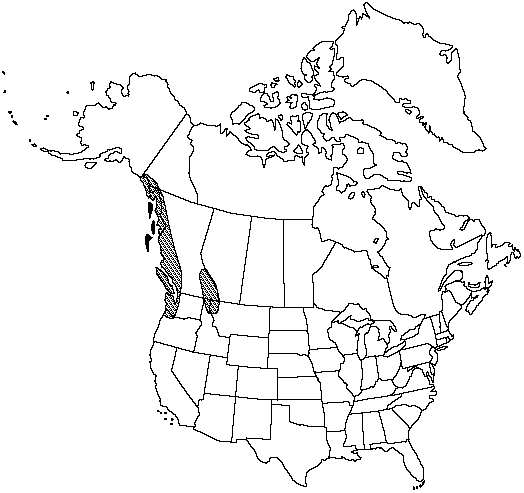FNA>Volume Importer |
FNA>Volume Importer |
| Line 22: |
Line 22: |
| | }}<!-- | | }}<!-- |
| | | | |
| − | --><span class="statement" id="st-d0_s0" data-properties="shoot orientation;shoot development;shoot some measurement;shoot growth form or orientation;shoot some measurement"><b>Shoots </b>erect, indeterminate, 12–20 cm, becoming long-decumbent, 4–20 cm;</span> <span class="statement" id="st-d0_s1" data-properties="portion life cycle">leaves in mature portion slightly smaller than in juvenile portion;</span> <span class="statement" id="st-d0_s2" data-properties="constriction fusion;constriction duration;constriction count">distinct annual constrictions present;</span> <span class="statement" id="st-d0_s3" data-properties="growth life cycle;growth orientation">juvenile growth erect.</span> <span class="statement" id="st-d0_s4" data-properties="leaf orientation;leaf orientation;leaf orientation;leaf orientation;leaf coloration;leaf coloration;leaf coloration;leaf reflectance"><b>Leaves </b>reflexed (juvenile portion) or spreading to reflexed (mature portion), light green to whitish green, lustrous;</span> <span class="statement" id="st-d0_s5" data-properties="largest leaf shape;largest leaf length;largest leaf some measurement">largest leaves oblanceolate, broadest at 1/2–3/4 length, 6–10 mm;</span> <span class="statement" id="st-d0_s6" data-properties="smallest leaf shape;smallest leaf width;smallest leaf some measurement">smallest leaves narrowly triangular, broadest at base, 4–7 mm;</span> <span class="statement" id="st-d0_s7" data-properties="papilla size">margins with small papillae;</span> <span class="statement" id="st-d0_s8" data-properties="adaxial surface count">stomates present on both surfaces, numerous (36–80 per 1/2 leaf) on adaxial surface.</span> <span class="statement" id="st-d0_s9" data-properties="branchlet architecture;pseudowhorl count;growth duration"><b>Gemmiferous </b>branchlets produced in 1 pseudowhorl at end of annual growth;</span> <span class="statement" id="st-d0_s10" data-properties="gemma length;gemma width">gemmae 4–4.5 X 3.5–4 mm;</span> <span class="statement" id="st-d0_s11" data-properties="lateral leaf shape;lateral leaf width;lateral leaf width">lateral leaves broadly obtuse, widest above middle, 1.25–1.5 mm wide.</span> <span class="statement" id="st-d0_s12" data-properties="spore some measurement"><b>Spores </b>30–38 µm.</span><!-- | + | --><span class="statement" id="st-undefined" data-properties=""><b>Shoots </b>erect, indeterminate, 12–20 cm, becoming long-decumbent, 4–20 cm; leaves in mature portion slightly smaller than in juvenile portion; distinct annual constrictions present; juvenile growth erect. <b>Leaves</b> reflexed (juvenile portion) or spreading to reflexed (mature portion), light green to whitish green, lustrous; largest leaves oblanceolate, broadest at 1/2–3/4 length, 6–10 mm; smallest leaves narrowly triangular, broadest at base, 4–7 mm; margins with small papillae; stomates present on both surfaces, numerous (36–80 per 1/2 leaf) on adaxial surface. <b>Gemmiferous</b> branchlets produced in 1 pseudowhorl at end of annual growth; gemmae 4–4.5 × 3.5–4 mm; lateral leaves broadly obtuse, widest above middle, 1.25–1.5 mm wide. <b>Spores</b> 30–38 µm.</span><!-- |
| | | | |
| | -->{{Treatment/Body | | -->{{Treatment/Body |
| Line 51: |
Line 51: |
| | |publication year=1991 | | |publication year=1991 |
| | |special status= | | |special status= |
| − | |source xml=https://jpend@bitbucket.org/aafc-mbb/fna-fine-grained-xml.git/src/287ef3db526bd807d435a3c7423ef2df1e951227/V2/V2_148.xml | + | |source xml=https://jpend@bitbucket.org/aafc-mbb/fna-data-curation.git/src/9216fc802291cd3df363fd52122300479582ede7/coarse_grained_fna_xml/V2/V2_148.xml |
| | |genus=Huperzia | | |genus=Huperzia |
| | |species=Huperzia occidentalis | | |species=Huperzia occidentalis |
| − | |adaxial surface count=numerous
| |
| − | |branchlet architecture=gemmiferous
| |
| − | |constriction count=present
| |
| − | |constriction duration=annual
| |
| − | |constriction fusion=distinct
| |
| − | |gemma length=4mm;4.5mm
| |
| − | |gemma width=3.5mm;4mm
| |
| − | |growth duration=annual
| |
| − | |growth life cycle=juvenile
| |
| − | |growth orientation=erect
| |
| − | |largest leaf length=broadest
| |
| − | |largest leaf shape=oblanceolate
| |
| − | |largest leaf some measurement=6mm;10mm
| |
| − | |lateral leaf shape=obtuse
| |
| − | |lateral leaf width=wide;widest
| |
| − | |leaf coloration=light green;whitish green
| |
| − | |leaf orientation=spreading;reflexed
| |
| − | |leaf reflectance=lustrous
| |
| − | |papilla size=small
| |
| − | |portion life cycle=mature
| |
| − | |pseudowhorl count=1
| |
| − | |shoot development=indeterminate
| |
| − | |shoot growth form or orientation=long-decumbent
| |
| − | |shoot orientation=erect
| |
| − | |shoot some measurement=4cm;20cm
| |
| − | |smallest leaf shape=triangular
| |
| − | |smallest leaf some measurement=4mm;7mm
| |
| − | |smallest leaf width=broadest
| |
| − | |spore some measurement=30um;38um
| |
| | }}<!-- | | }}<!-- |
| | | | |
| | -->[[Category:Treatment]][[Category:Huperzia]] | | -->[[Category:Treatment]][[Category:Huperzia]] |
Shoots erect, indeterminate, 12–20 cm, becoming long-decumbent, 4–20 cm; leaves in mature portion slightly smaller than in juvenile portion; distinct annual constrictions present; juvenile growth erect. Leaves reflexed (juvenile portion) or spreading to reflexed (mature portion), light green to whitish green, lustrous; largest leaves oblanceolate, broadest at 1/2–3/4 length, 6–10 mm; smallest leaves narrowly triangular, broadest at base, 4–7 mm; margins with small papillae; stomates present on both surfaces, numerous (36–80 per 1/2 leaf) on adaxial surface. Gemmiferous branchlets produced in 1 pseudowhorl at end of annual growth; gemmae 4–4.5 × 3.5–4 mm; lateral leaves broadly obtuse, widest above middle, 1.25–1.5 mm wide. Spores 30–38 µm.
Habitat: Terrestrial in shaded conifer forests and swamps, often along streams and in marshes
Elevation: 10–1000(–2000) m
Distribution
Alta., B.C., Yukon, Alaska, Idaho, Mont., Oreg., Wash.
Discussion
Huperzia occidentalis is similar to the eastern H. lucidula and occupies similar habitats.
Selected References
None.
